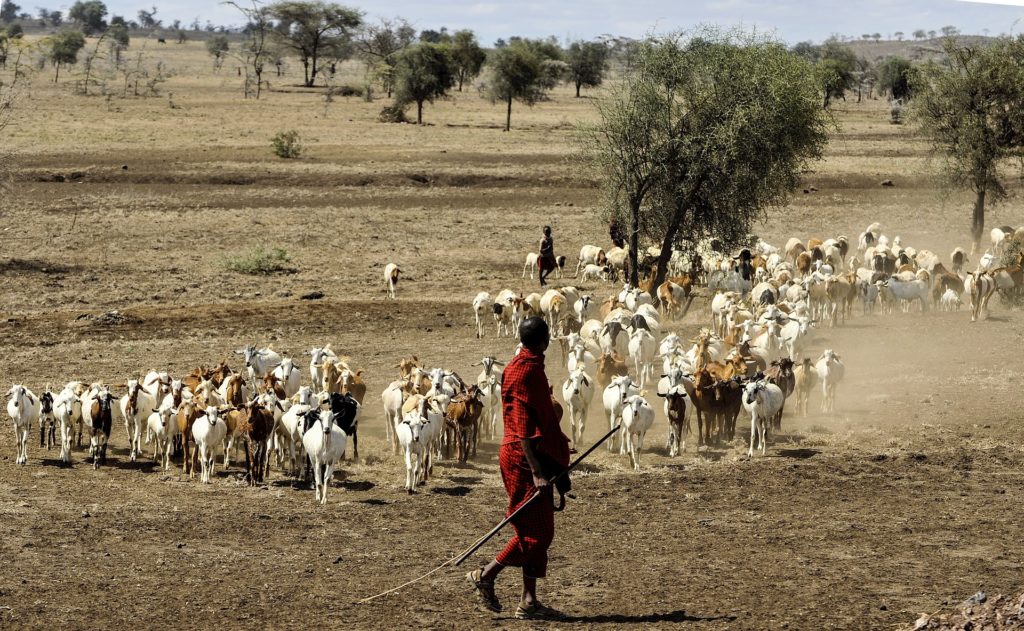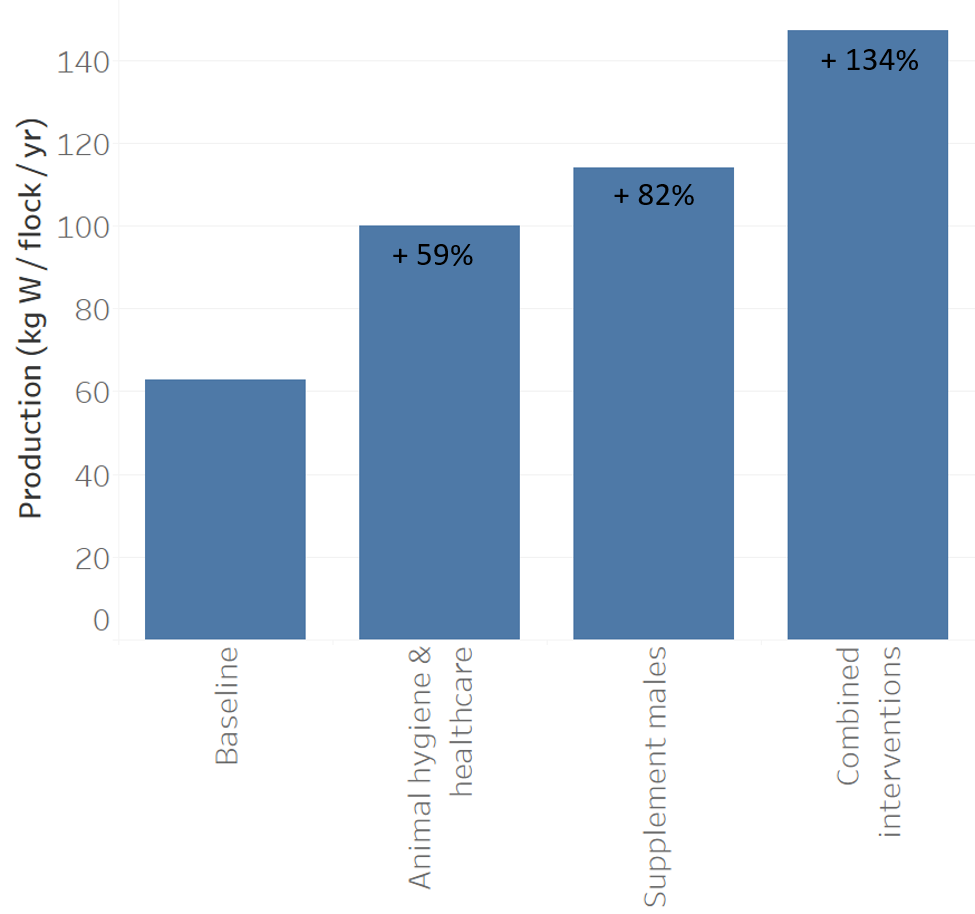Improving goat meat production in Tanzania
Most goat meat is produced in pastoral and agro-pastoral systems. Production and household income can be increased through interventions to increase reproduction, growth rates and animal survival.
Current production systems
Local goats such as the Small East African graze communal land during the day and are penned at night to reduce losses from predation and theft. There is very limited, or no, supplementary feeding. Manure may be allowed to accumulate in pens for collection as fertiliser. Pens are often muddy and dirty, especially during the rainy season.
Female offspring are kept as replacement breeders. Males are sold or consumed by the household. There are high animal losses due to disease, theft and predation.
Issues limiting goat meat production
Low reproduction rates
Largely caused by inadequate nutrition and disease.
Low growth rates
Largely caused by inadequate nutrition and disease.
High animal mortality
Largely caused by poor animal hygiene and high parasite burden.
Using models to understand potential impacts
Bio-economic models can be used to simulate and understand the potential effects of changes to production systems. A baseline simulation is created to match current production systems, and different interventions are tested.
Models show what could happen, not what will happen, so results need to be interpreted with caution.
For more information: McDonald et al. (2019) Agricultural Systems 176, 102659.
Modelled baseline household
- 12 breeding females, 2 males + offspring
- Kids weaned at 5 months
- Males sold at 25 kg
- Mating from 15 months, 10% twinning
- 20% mortality of kids and adults
Modelled interventions to increase production
Reduced herd size
Reduction in number of breeding animals (10 females, 1 male) to increase feed available for rest of flock.
Improved animal management & hygiene
30% reduction in herd mortality through improved animal hygiene and management.
Improved animal hygiene & healthcare
50% reduction in herd mortality through improved animal hygiene, management and treatment of internal parasites. Cost of treatment US$2/head/yr.
Supplementation of growing males
Weaned males supplemented with maize stover (0.5 kg dry matter/head/day) during dry season. Stover can be produced on-farm.
Early turnoff
Weaned males sold at 20 kg instead of 25 kg, and may be finished by a more specialised farmer prior to slaughter.
Combined interventions
Reduced animal losses through improved animal hygiene and healthcare, combined with supplementation of growing males during the dry season.
Interventions can increase production and profitability
Modelled impacts of interventions to goat meat production systems
| Flock size
(head) |
Number of births/year | Number of animals sold or consumed by household | Production1
(kg W/flock/yr) |
Losses2
(%) |
Livestock Gross margins
(TZS3) |
|
| Baseline | 30.6 | 9.0 | 2.77 | 62.8 | 18.2 | 94,971 |
| Reduced herd size | 24.0 | 7.7 | 3.52 | 86.1 | 16.4 | 148,448 |
| Animal management & hygiene | 32.4 | 9.8 | 4.60 | 91.7 | 13.5 | 151,122 |
| Animal hygiene & healthcare | 33.4 | 10.0 | 5.28 | 99.9 | 11.6 | 31,374 |
| Supplement males | 26.7 | 9.1 | 4.63 | 114.1 | 15.3 | 202,033 |
| Early turnoff | 24.6 | 9.1 | 4.63 | 98.4 | 16.5 | 173,082 |
| Combined interventions | 32.6 | 10.0 | 6.81 | 147.1 | 7.9 | 130,981 |
1 Production – total liveweight of animals sold and consumed in a flock per year.
2 Losses – percentage loss from mortality, theft, predation, etc. in a flock per year
3 1 USD = 2316 TZS
Modelling of interventions shows the greatest increases in production come from combining multiple interventions.
Key messages
- Income from goat production is highly dependent on prices and access to market. Increased production females do not always result in increased income.
- Combined interventions are more successful than single interventions.
- Reducing herd size increases feed available for other animals, increasing growth rates and reducing losses. For communal pastures, this would require a community-based approach.
- Reducing mortality through improved management and health care reduces animal losses. Impact on gross margin will depend on cost of interventions.
- Strategic supplementation of males in the dry season means they reach slaughter weight earlier. Farmers need to balance nutrition requirements of goats with other livestock (it may be more economic to feed other animals such as cattle).
Download our increasing small ruminant production in Tanzania fact sheet here.


